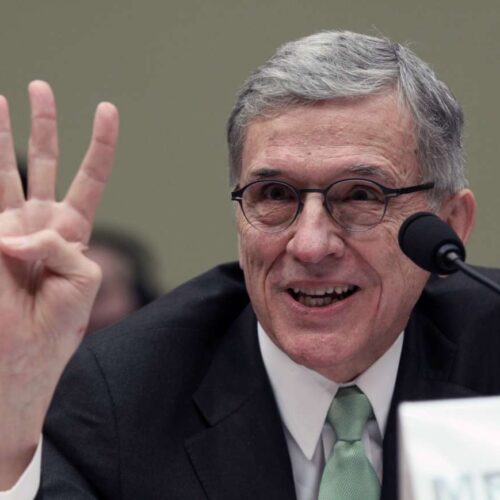Introduction
The Federal Communications Commission, concerned about the high cost of broadband, wants to put cell phones that can access the Internet in the hands of America’s poor in hopes of reducing the digital divide.
FCC Chairman Tom Wheeler is proposing to beef up the $1.7 billion Lifeline program, funded by charges on phone bills, and originally created to subsidize the cost of landline phones. The program now reaches 12 million families and has been expanded to limited-use cellphones.
The proposal is far from being a done deal — still to come are comments on what a minimum service package should look like. For example, the amount of data usage and voice minutes to be permitted will need to be determined. Wheeler also asked for comments on how to increase competition among mobile phone providers to reduce prices.
Wheeler hopes to reduce fraud and abuse in the oft-criticized subsidy program, and shrink the digital divide. Whether that can be accomplished through a wireless connection is an open question. The program does nothing about wireline connections, which are faster, more robust and cheaper than wireless phones.
Regardless, a disproportionate number of low-income families do not have Internet connections of any sort, and low-cost wireless access may be their best option. No connection means no easy access to the wealth of online information that most Americans enjoy, such as health research, job openings, education and training, and banking and government services.
Only 48 percent of households earning $25,000 or less have broadband at home compared with 95 percent of households with incomes of $150,000 or more, putting the poor at an even deeper economic disadvantage, according to the FCC. Those percentages haven’t changed much in recent years.
A long-running debate among Washington, D.C., policy analysts has been how to reduce the divide. Some analysts and surveys say households choose not to purchase broadband service because they either don’t have the computer skills to navigate the Internet or they don’t think online content is relevant to their lives.
Other analysts argue that the high price of broadband and a computer is the biggest reason low-income families don’t buy Internet service. It’s all in how you ask the question, as the Center for Public Integrity has reported more than once.
Wheeler, in his proposal to reform the Lifeline program, is coming down on the price side of the argument. And he has data that supports his position.
In an FCC study that tested different subsidies, services and marketing strategies for smartphones — and released just days before Wheeler’s announcement — the agency concluded that price, not digital literacy, was the determinant for previously unconnected users to buy a broadband plan with a subsidized smartphone.
“Patterns within the data indicate that cost to consumers does have an effect on adoption and which plans they choose,” the study’s authors wrote. Requiring wireless carriers “to offer or provide digital literacy training does not appear to be an efficient or effective model for converting non-adopters to adopters.”
John Horrigan, who studied Internet adoption when working on the Obama administration’s 2010 National Broadband Plan, said the FCC’s findings support his research that shows price is the primary obstacle to broadband adoption.
He added in an email, however, that while the FCC found that offering training through carriers was not effective, “offering training through community institutions (neighborhood nonprofits, libraries) is effective and should be part of any overall broadband adoption strategy.”
While the distinction may seem inconsequential, it has big implications on what policy the FCC should follow to reduce the digital divide. The FCC is scheduled to vote on Wheeler’s proposal June 18.
This story was co-published with TIME.
Read more in Inequality, Opportunity and Poverty
Broadband
White House report says lack of competition barrier to broadband adoption
New report details ways to use existing programs to expand usage
Broadband
Airwaves auction may shrink — not increase — wireless competition
Spectrum auction may help small carriers, but not enough to take on goliaths AT&T, Verizon


Join the conversation
Show Comments